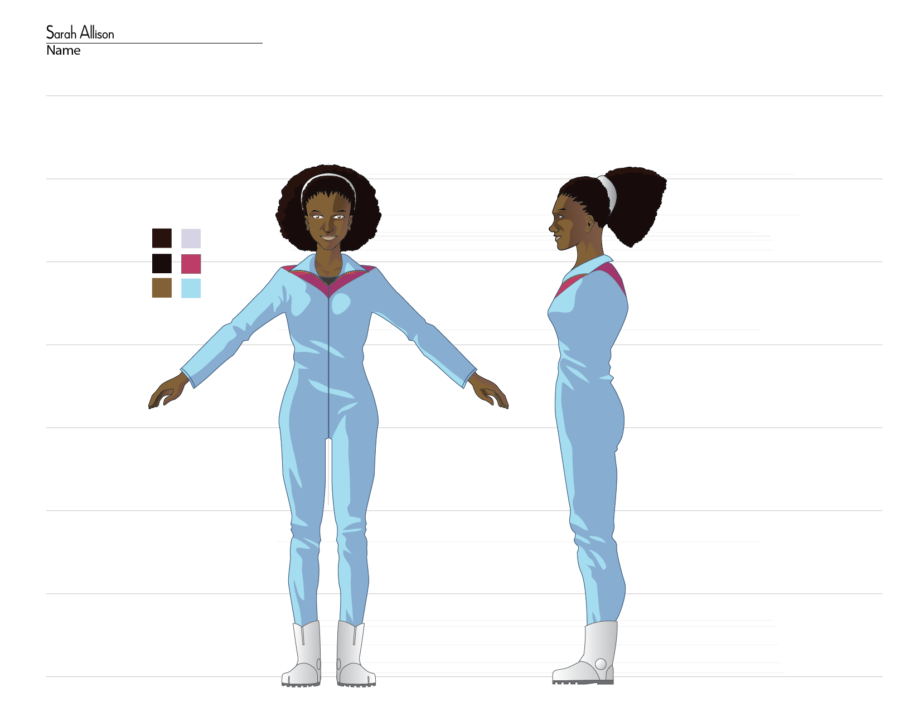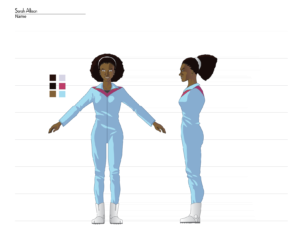This last week, I mostly spent getting up to speed with Blender’s scripting interface for Python. I have to admit to being a little anxious about this, but it’s really pretty simple stuff once you get started (that’s always the hard part!). Daniel’s working on the model sheets. And I’m starting to write the structural parts of the book we’re creating as part of the production process.
Python scripting
I felt it was about time I started getting comfortable with python scripting in Blender, because a major part of our concept for producing Lunatics is the use of “real time animation” script extensions, and particularly Brett Hartshorn’s “Pyppet” script which is currently under development. It’s even possible, given that I do have some Python experience, that I really ought to be helping to write it. Even if I can’t get that far, though, I certainly will need to install, test, and maintain the software. And that means I really need to know how the Blender API and scripts work.
Just to complicate things, Blender went through a major API change from 2.4x to 2.5x, so I’m actually going through a two-part process: first, I’m learning how the 2.4 API works (partly because I have book on this), and second, I’m translating my work to the 2.5 API using the
documentation from the Blender 2.5 wiki.
So far, I’ve written a script to make pie-charts from data tables using the 2.4 API. Not the most exciting project, perhaps, but it does exercise the necessary skills and I do use charts to support my writing work from time to time, so it will get used.
Model sheets
Daniel is continuing to work on model sheets. This is going a little slower than originally estimated, but there’s no sign that that is likely to be a problem. He’s sent me a bitmap of the “Sarah Allison” plan views, which I’ve attached. The original files are in Adobe Illustrator format, which I think I will be able to import into SVG (not yet tested on these sheets, but I have worked with .AI files before). I originally expected he’d be working with pencil on paper (or bristol, really) as he did on the concept sheets, but working digitally has some very nice advantages, so that’s actually a happy surprise for me.
He’s got about four other sheets in progress — I think he’s working on them in parallel. As usually, I try not to crowd the artist too much as long as things are moving forward.
Starting the book
We’re still not exactly sure what the book that we included as a Kickstart reward will be called, but at minimum, it will include the character and set design art, the script for the pilot episode, and a writer’s guide. It will probably also include a “prospectus” or “business plan” for the project, which talks about some production details and how we hope to make it self-sustaining on fan-support.
This week, I’m starting on outlining the book. I want to figure out what really needs to be in it. I’ve already decided that it needs to be under 300 pages, so that’s my upper limit. Knowing me, that means it’ll be 299 pages, but I’ll try to use some restraint.
Of course, this book is not just for fans, it’s also meant to be a guide to help keep us on track on the project, and to collect a lot of critical information together for our use. So it’s also a production tool. Not to mention the fact that explaining our business model reassures me that we have one that consists of little bit more than “full speed ahead and hope for the best”!
So it feels a little bit like I’ve been flailing around working on a half-dozen different things at once. But I’ll soon be able to settle down a bit and focus on one thing at a time. I’m looking forward to that.


